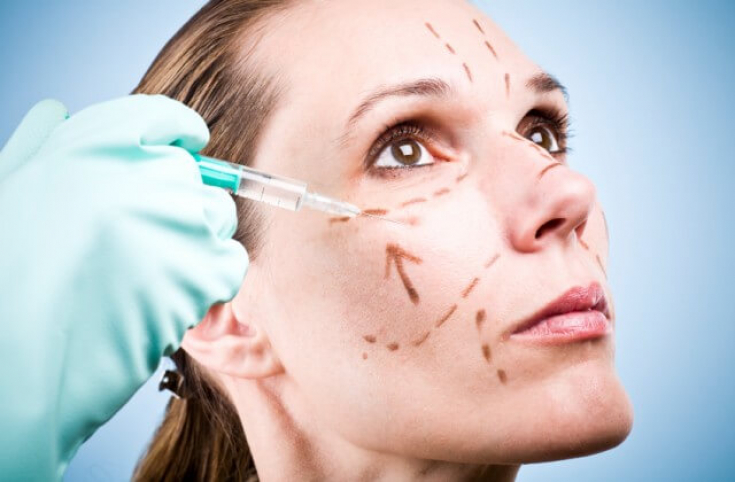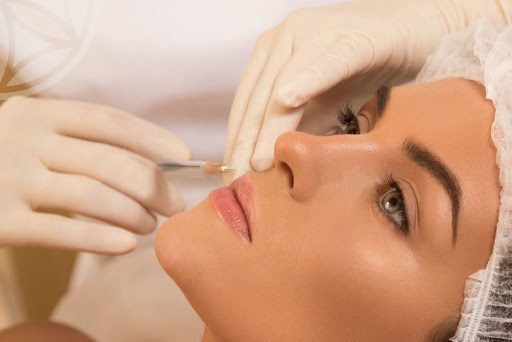Contouring is loved by both doctors and patients of aesthetic clinics, because this procedure is carried out quickly, comfortably, in skilled hands it gives a pronounced and at the same time natural result, and is also characterized by a high safety profile. Serious complications after filler injections, provided that the doctor follows the manufacturer's recommendations and the anatomy of the corrected zone, are very rare. Adverse events after the procedure, such as edema, although not dangerous, still prevent almost every patient from fully enjoying the results of the correction immediately after contouring. Why do edema appear after fillers, who is to blame and what to do – read the article estet-portal.com.
- Why does swelling appear after the introduction of fillers
- Which areas are most likely to develop swelling after fillers
- How to prevent swelling after fillers
- How to remove swelling after contour plasty
Why does swelling appear after the introduction of fillers
Edema represents – accumulation of excess serous fluid in and around cells, tissues, or serous compartments of the body. After contouring, edema often occurs, as a rule, this complication is mild, not dangerous and resolves spontaneously.
Follow us on Facebook!
Before the procedure, the patient must be warned about the possibility of edema after the introduction of fillers.

The following factors may affect the appearance of edema:
- related to the patient (age, lifestyle, diseases, dysfunction of the lymphatic system);
- associated with medication (NSAIDs, hormonal drugs, calcium channel blockers, certain vitamins);
- Filler related (type of product, area treated, volume injected);
- procedure-related (degree of injury caused during contouring, which depends, for example, on the technique and speed of filler injection).
The more the skin is injured during the aesthetic procedure, the more pronounced the swelling will be.
A symptom of puffiness is the presence of swelling on or under the skin. Swelling after filler injections may be:
- soft (an indentation remains after palpation);
- tight (after pressure is released, the tissues return to their original position).
The density of the edema may be due to location and anatomical structures that limit the accumulation of fluid. More often, after the introduction of fillers, the edema is soft and easily squeezed on palpation.

Read also: Complications of contour plastics: when «beauty injections» not good
Edema is easily differentiated from a foreign body (dermal filler, for example), which has clearer contours and a firmer consistency.
If the affected area is erythematous and elevated, possibly an infection.
Which areas most often appear puffiness after fillers
Swelling may appear in any area where contouring is performed. Most often, swelling after fillers is observed:
- on lips;
- in the periorbital zone;
- in the zygomatic area.
Tissue edema can be one-sided and quite pronounced, especially when using hyaluronic acid-based fillers, which are highly hydrophilic. The practitioner should be able to distinguish between edema and asymmetry caused by gel injection.
Swelling of the zygomatic area – accumulation of fluid in the infraorbital region after filling of the nasolacrimal trough with fillers. In almost 25% of patients after such a procedure, edema persists for an average of 5.4 months.
How to prevent swelling after fillers
To prevent or minimize swelling after fillers, the injection doctor should:
- Collect a complete medical history, obtain information about current diseases, medications and nutritional supplements the patient is taking.
- Choose the right filler for the target area. Some products include additional ingredients such as mannitol to reduce the risk of swelling after the procedure.
- Use minimally traumatic techniques. The appearance of edema partly depends on the technique of injection of the drug and is more often observed when using the fan technique, when a large volume of filler is injected into one location at high speed.
- Perform light massage after insertion. At the same time, intensive massage can contribute to swelling due to tissue injury.
- Apply ice, which also relieves sensitivity and redness, increasing patient satisfaction with the contouring procedure.
- If possible, avoid the use of local anesthetics in the treated area. This leads to secondary edema, which can distort the contours and results of the procedure.
- Advise patient to avoid exposure to extreme temperatures or altitude for 48 hours after
filler injections. How to remove swelling after contouring
use ice packs to reduce swelling or warm compresses;
- soft massage of the problem area to improve lymphatic flow, which the patient can perform at home.
- Edema may occur as a result of a Type I hypersensitivity reaction. It appears, as a rule, in a short time after the procedure in response to the introduction of foreign material. Puffiness can be localized or generalized, moderate or severe.

Immunoglobulin E triggers an
inflammatory cascaderesulting in:
swelling;- erythema;
- pain;
- itch.
- Swelling and inflammation subsides after a few hours or days, but in some cases where there is a reaction to a dermal filler, it can persist for several weeks.
Even severe swelling after filler injections in most cases disappears spontaneously within a week without any intervention from the doctor or the patient.
The patient is given an antihistamine (eg, loratadine or cetirizine 10 mg once daily) to begin with, although oral steroids may be needed if swelling and discomfort are significant (eg, prednisolone 40 mg once daily for a week).If the swelling persists for more than 2 weeks,
the cause of the swelling should be clearly identified. Superficial application of the product is often mistaken for edema, since hyaluronic acid attracts a large amount of water. In this case, the problem is solved with the help of hyaluronidase. In the case of inflammatory nodules and infections, appropriate therapy is prescribed. Delayed edema may develop several days or even weeks after filler injection against the background of
reactions hypersensitivity IV type. Oral steroids are used for therapy (eg, 40 mg of prednisolone for a week, and then the dose is reduced by 5 mg every couple of days until symptoms disappear). Given the risks associated with long-term steroid use, hyaluronidase injections or other filler removal methods are preferred in many cases. Adapted from J Clin Aesthet Dermatol.
Subscribe to our channel









Add a comment